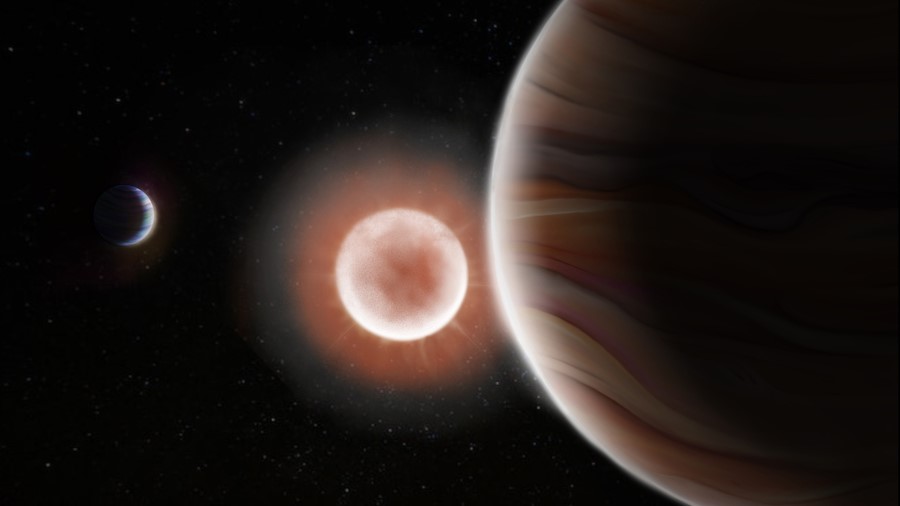NASA's exoplanet hunter TESS spots warm Jupiter with longest known year

In a cosmos rich with planets beyond our solar system, a majority tread astonishingly close to their stars. But NASA's exoplanet-hunting satellite has now spotted a world with one of the longest known periods, meaning it strays quite far from its star, adding to just a handful of such long-distance planets.
The newly found gas giant called TOI-4600c is about the size of Saturn, resides in a star system about 815 light-years from Earth and orbits its star every 482.82 days or 16 months. Among the 2,000 or so worlds detected by NASA's TESS (Transiting Exoplanet Survey Satellite), TOI-4600c is special for two reasons. Not only does it have the longest year, but at a frigid -110 degrees Fahrenheit (-78 degrees Celsius), the newly found world is also one of the coldest among those spotted by TESS.
Astronomers are particularly excited about this discovery because "based on what we know about the exoplanets we found, so far, nothing really looks like the solar system," Ismael Mireles, a graduate student at the University of New Mexico and the lead author of the new study, said in a statement. "So we want to find out how these different types of systems formed and migrated."
Related: Bizarre super-puffy exoplanet hosts rare 'thermometer molecule'
With current observation methods, worlds with such long orbital periods have been notoriously hard to detect and harder still to confirm.
One of the very few confirmed exoplanets with an orbital period longer than TOI-4600c is Kepler 412b, which is about 1,000 light-years from Earth and circles its star once every two years. The most extreme oddball that astronomers have found so far is an exoplanet that takes a whopping 80,000 Earth-years to circle its star.
In the same TOI-4600 system, TESS also found a second "warm" Jupiter called TOI-4600b. This world is bigger than Neptune, but smaller than Saturn, and orbits its star every 82.69 days. Its temperature averages around 170 degrees Fahrenheit (76.6 degrees Celsius), so it is significantly warmer than its planetary neighbor TOI-4600c, even though both belong to the same solar system.
Breaking space news, the latest updates on rocket launches, skywatching events and more!
"It's relatively rare that we see two giant planets in a system," Katharine Hesse, a technical staff member at MIT's Kavli Institute for Astrophysics and Space Research and one of the authors of the new study, said in a separate statement. "We're used to seeing hot Jupiters that are close in to their stars, and we usually don't find companions to them, let alone giant companions. This system is a more unique configuration."
To sniff out exoplanets transiting in front of their star, TESS looks for dips in starlight of stars in just one region of the sky for 30 days, which also means worlds that have orbital periods longer than 40 days are not usually detected by the satellite. Indeed, the majority of exoplanets detected by TESS circle their stars in less than 40 days.
In the new study, however, authors stacked up multiple observations "to be able to get enough data to find planets with orbits longer than a month," Hesse said in the statement.
The newly discovered planets belong to a solar system called TOI-4600, at the center of which lies an orange dwarf star, which is smaller and cooler than our sun. Stars of this type are thought to be stable and host planets that could be relatively friendly places for life to thrive.
This paper was published Thursday (Aug. 31) in the journal The Astrophysical Journal Letters.

Sharmila Kuthunur is an independent space journalist based in Bengaluru, India. Her work has also appeared in Scientific American, Science, Astronomy and Live Science, among other publications. She holds a master's degree in journalism from Northeastern University in Boston.
